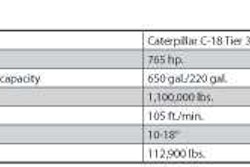The Federal Railroad Administration (FRA) on Aug. 31 awarded three grants totaling $55 million to reduce congestion and increase safety on the Pacific Surfliner intercity rail corridor between Los Angeles and San Diego, according to Caltrans.
“More Californians are choosing trains for travel and Caltrans is committed to ensuring a safe ride for all our passengers,” said Acting Caltrans Director Malcolm Dougherty.
$38 million will fund a final segment of a third rail track between Los Angeles and Fullerton. The Pacific Surfliner, Metrolink, and freight trains currently share two rail tracks, which can create congestion and delays. $3.4 million will fund new track construction at the Oceanside station to move Metrolink commuter trains off the mainline.
$13.5 million will fund a Global Positioning System-based (GPS) signaling system, known as Positive Train Control (PTC), which will increase railroad safety by monitoring and controlling trains to prevent collisions and derailments. The implementation of PTC is mandated for all rail providers by 2015 by the federal Rail Safety Improvement Act.
In a partnering effort, the Southern California Regional Rail Authority, which operates Metrolink, will install the PTC system on tracks between San Onofre and Moorpark, where Metrolink shares the line with the Pacific Surfliner. The state will match the federal funds for the PTC dollar-for-dollar with 2009 Proposition 1A rail bond funds, increasing the project’s funding to $27 million.
“Metrolink is grateful to the leaders, who demonstrated their commitment to rail safety by allocating these funds,” said Metrolink Chairman Richard Katz in a written statement. “Our program is now fully funded, and Metrolink is well on our way to being the first commuter rail agency in the nation to implement Positive Train Control.”
Adds Will Kempton, CEO of the Orange County Transportation Authority (OCTA): “Enhancing our commuter rail service is a critical component in ensuring Southern California’s transportation network can carry us successfully into the future,” said . “We are thankful for the strong partnership we have forged with the federal government and appreciate the continued support of our ongoing efforts to improve safety and mobility in the region.”








